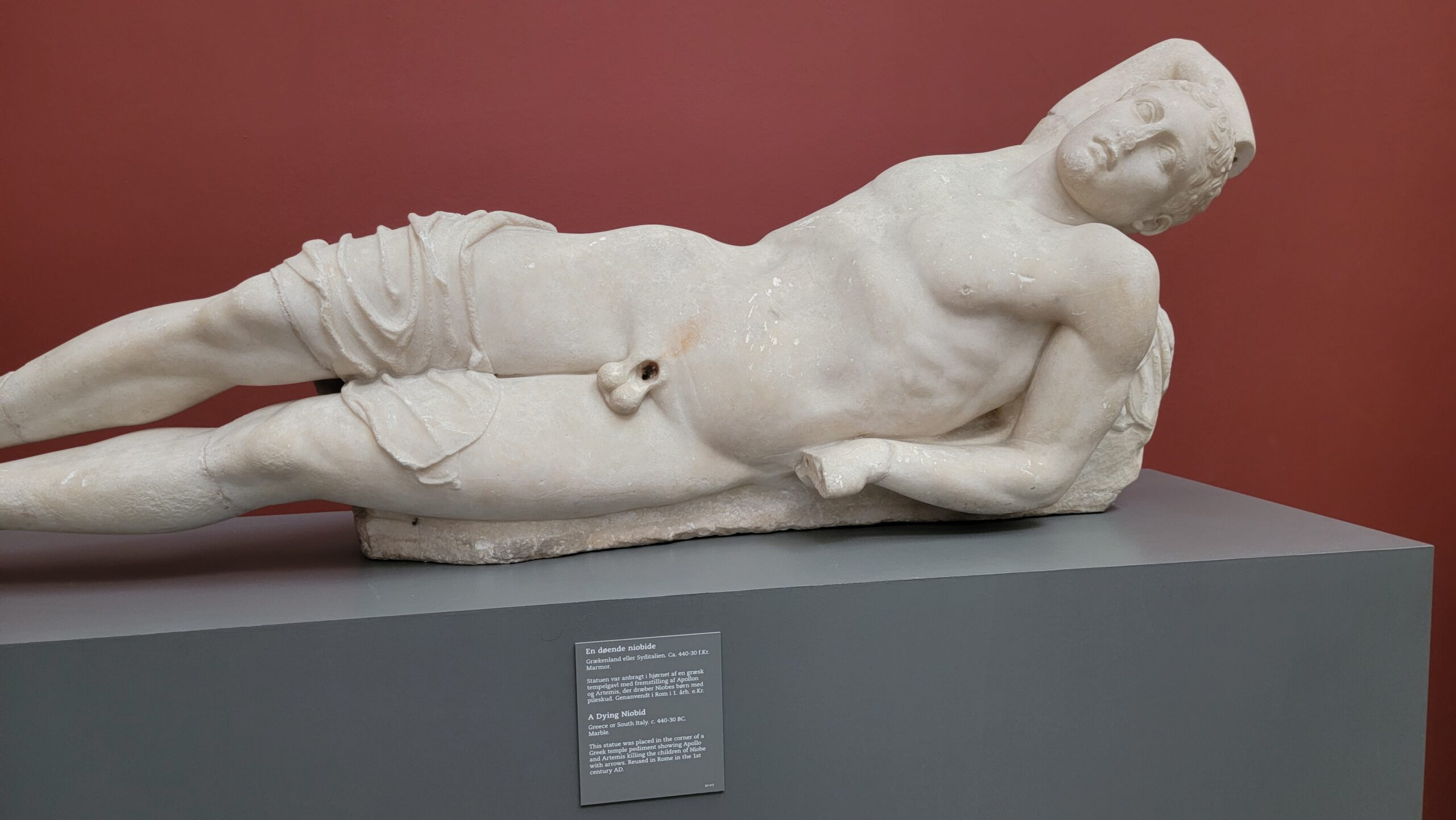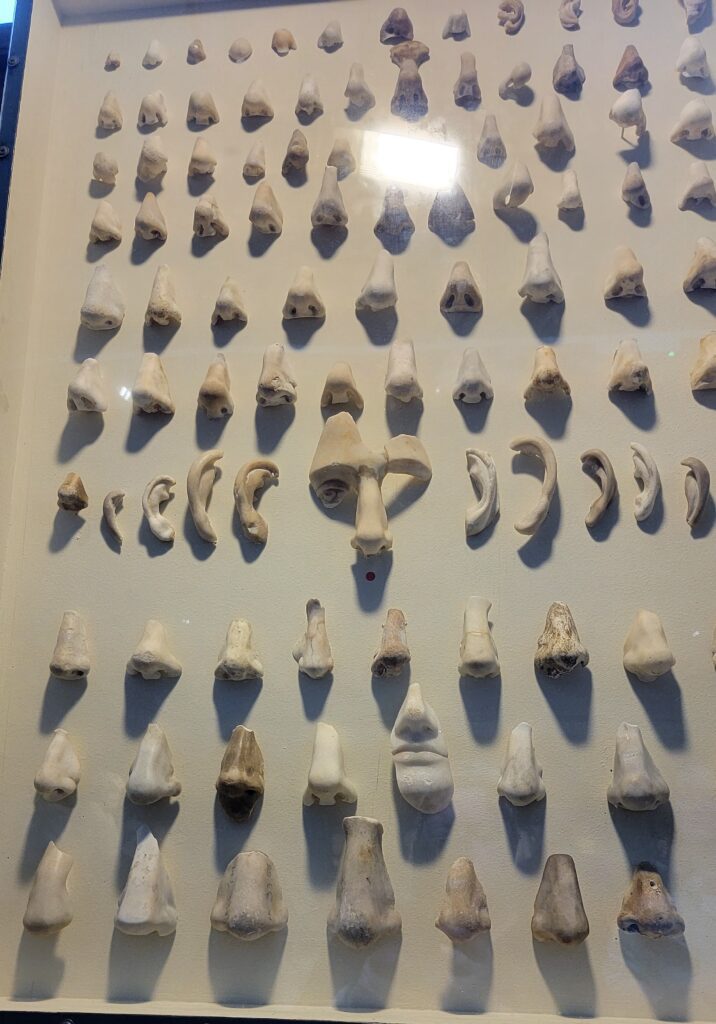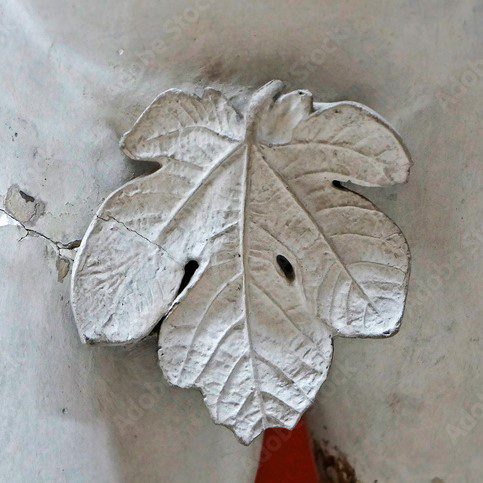Last week while my husband and I were in Copenhagen, we stopped into the Glyptotek on the one pouring-down-rain day we had. The Glytotek has a really gorgeous indoor garden, but the bulk of the museum is sculpture. The collection represents the private art collection of the late Carl Jacobsen, the son of the founder of the Carlsberg Breweries, and he apparently had a thing for antique/ancient sculpture from Egypt, Rome, Greece, etc (there’s also an important Auguste Rodin collection there, too). Quite a lot of marble heads, most missing their noses.
There were also a lot of missing penises . . . take this poor fellow, for instance:

Imagine room after room of male sculpture, 99 percent of which appeared to have had their penises very conspicuously drilled out. This was Denmark–they are not a prudish people. And so I got to wondering why exactly the beans were left, but the franks were taken. I’ve seen it blamed on earthquakes. Greece is known for having quakes, and sculpture parts break off. And I’d buy that, except all the sculptures’ penises are removed in the exact same way: as though someone scooped out the offending part with a melon baller-slash-ice pick, leaving a round hole. The noses are often broken off, but the faces don’t have holes in place of the nose. So what gives?
I haven’t found anywhere confirming this yet, but there’s a clue related to sculptures at the Vatican. In the Middle Ages, the religiously damned were portrayed as naked, while the saved were clothed–and in the 1500s Pope Paul IV started having sculptural penises in the Vatican collection covered by plaster fig leaves. Pope Innocent X continued on with the tradition in the 1600s, but with metal fig leaves. Pope Clement XIII swept in in the mid-1700s to demand that any remaining penises bear the fig leaf. Pope Pius IX had any sculpture that hadn’t been properly clothed destroyed in the mid 1800s. Destroying depictions of nudity wasn’t new, though–once people converted to Christianity, statue-smashing mobs were fairly common–and sculpture that survived or were missed by rioters were squirreled away in private homes where the nudity was, ahem, sanitized.
 So my guess is that many of the statues in the Glyptotek had once been victim to penis removal and replacement with some kind of fig leaf or other covering–and the Glytotek folks restored the sculpture to the original state as best they could. There is a display of broken-off noses in the Glyptotek . . . which makes me wonder if they might have a box of broken-off penises somewhere in the archives. Or if deep within the bowels of the Vatican, some poor guy in charge of the art collection hid a locked chest of marble penises. One day, hundreds of years from now (providing we survive climate catastrophe), will archeologists discover these long-lost caches of forbidden anatomy? Will the Glyptotek decide to put up a board of removed penises? It’s hard to imagine what the signage for that might look like.
So my guess is that many of the statues in the Glyptotek had once been victim to penis removal and replacement with some kind of fig leaf or other covering–and the Glytotek folks restored the sculpture to the original state as best they could. There is a display of broken-off noses in the Glyptotek . . . which makes me wonder if they might have a box of broken-off penises somewhere in the archives. Or if deep within the bowels of the Vatican, some poor guy in charge of the art collection hid a locked chest of marble penises. One day, hundreds of years from now (providing we survive climate catastrophe), will archeologists discover these long-lost caches of forbidden anatomy? Will the Glyptotek decide to put up a board of removed penises? It’s hard to imagine what the signage for that might look like.
Of course, it also has me thinking about why Christianity more than other religions were so down on nudity and felt like being naked was sinful or that nude people were damned. I’ve read the Bible. I know it claims that humans were designed in God’s image–and I’m aware of the Garden of Eden, and that worldly knowledge allegedly made Adam and Eve suddenly aware of their nudity to the point they had to don clothing to avoid the shamefulness of it. This is delving into religious dogma now, something I’m not really all that interested in debating . . . it all just seems so counterintuitive. And we have sculpture without penises to remind us.


One Response
interesting that women’s breasts were not covered